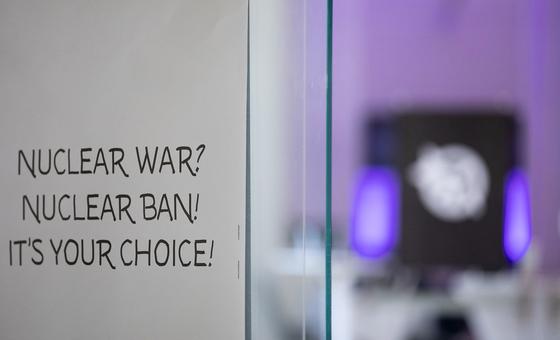Secretary-General António Guterres issued his call in a statement marking the International Day for the Total Elimination of Nuclear Weapons on Tuesday.
He warned that hard-won progress over many decades to prevent the use, spread and testing of nuclear weapons is being undone, and called for nuclear disarmament and a strengthened regime of non-proliferation.
Resurgent threat
In the decades since the nuclear attacks on Hiroshima and Nagasaki, with all the horrific devastation and atrocious consequences that ensued, there has been some progress led by the UN – but that’s now being undone, said the UN chief.
In its very first resolution back in 1946 the UN General Assembly identified nuclear disarmament as a leading goal. Yet, today around 12,512 nuclear weapons remain.
Countries possessing such weapons have well-funded, long-term plans to modernize their nuclear arsenals.
No lack of legal base
There is no lack of treaties and agreements, both regional and global, setting the framework for disposing of nuclear weapons.
The Treaty on the Non-Proliferation of Nuclear Weapons (NPT) not only binds those ratifying it to stop the spread, it also encourages peaceful nuclear energy use, and disarmament.
It’s the only treaty that compels nuclear-armed countries to commit to disarmament under international law. It opened in 1968, took effect in 1970, and was extended indefinitely in 1995. Some 191 countries, including five openly carrying a nuclear weapons arsenal, have joined it, making it the most ratified disarmament treaty.
The United States, for example, reaffirmed its commitment to the Treaty this July.
Another important pillar is the Comprehensive Test Ban Treaty (CTBT), adopted in 1996.
It has been signed by 185 countries, and ratified by 170, including three nuclear weapons-holding States: France, Russia and the United Kingdom.
However, to enter into force, the Treaty must be signed and ratified by 44 specific nuclear technology holding States, eight of which have yet to ratify: China, Egypt, India, Iran, Israel, the Democratic People’s Republic of Korea, Pakistan and the United States.
A relatively new addition to the treaty system is The Treaty on the Prohibition of Nuclear Weapons (TPNW) that envisages a comprehensive set of prohibitions on participating in any nuclear weapon activities, including undertakings not to develop, or test. This entered into force to universal acclaim, on 22 January 2021.
Eliminate nuclear risk
“The only way to eliminate the nuclear risk is to eliminate nuclear weapons,” said António Guterres urging countries to work together to banish these “devices of destruction to the history books, once and for all”.
That, according to him, means strengthening the nuclear disarmament and non-proliferation regime, including through the Treaties on Non-Proliferation of Nuclear Weapons and the Prohibition of Nuclear Weapons – and ratifying the CTBT without delay.
Mr. Guterres called to use “the timeless tools of dialogue, diplomacy and negotiation to ease tensions and end the nuclear threat”, reminding that disarmament is at the heart of his Policy Brief on a New Agenda for Peace, launched in July.

